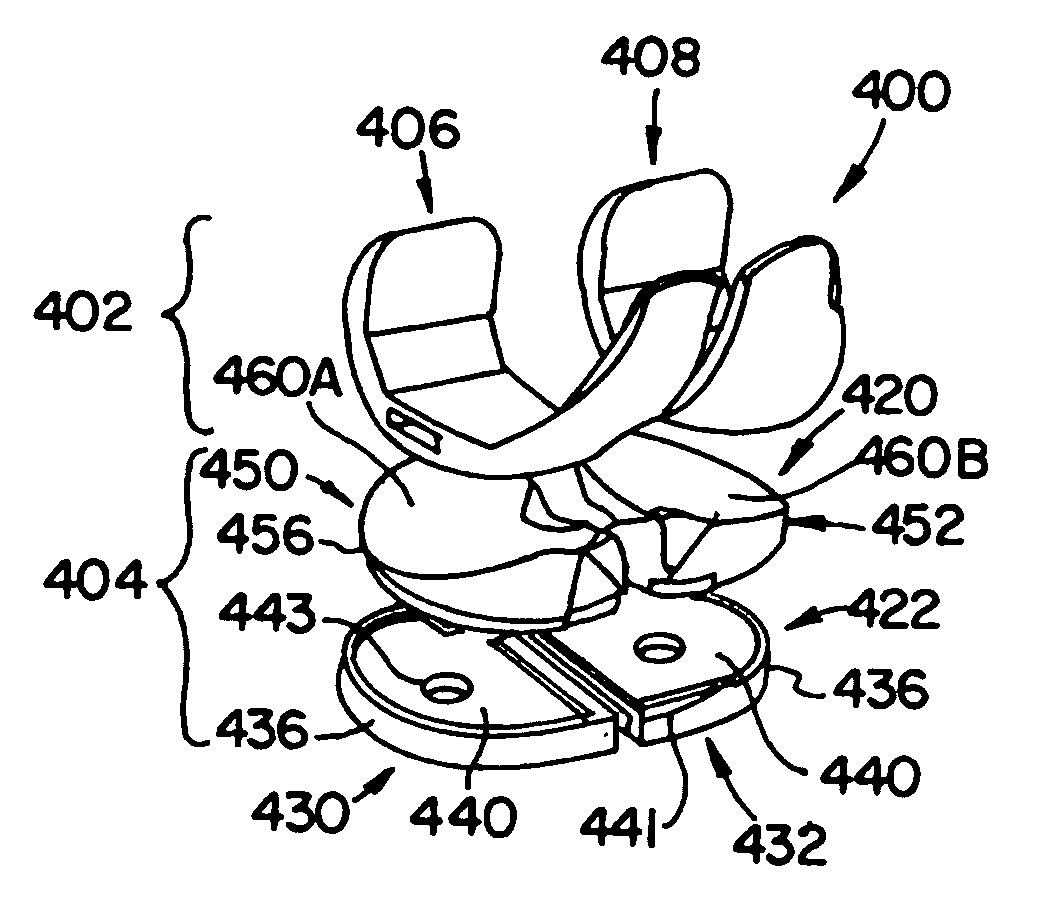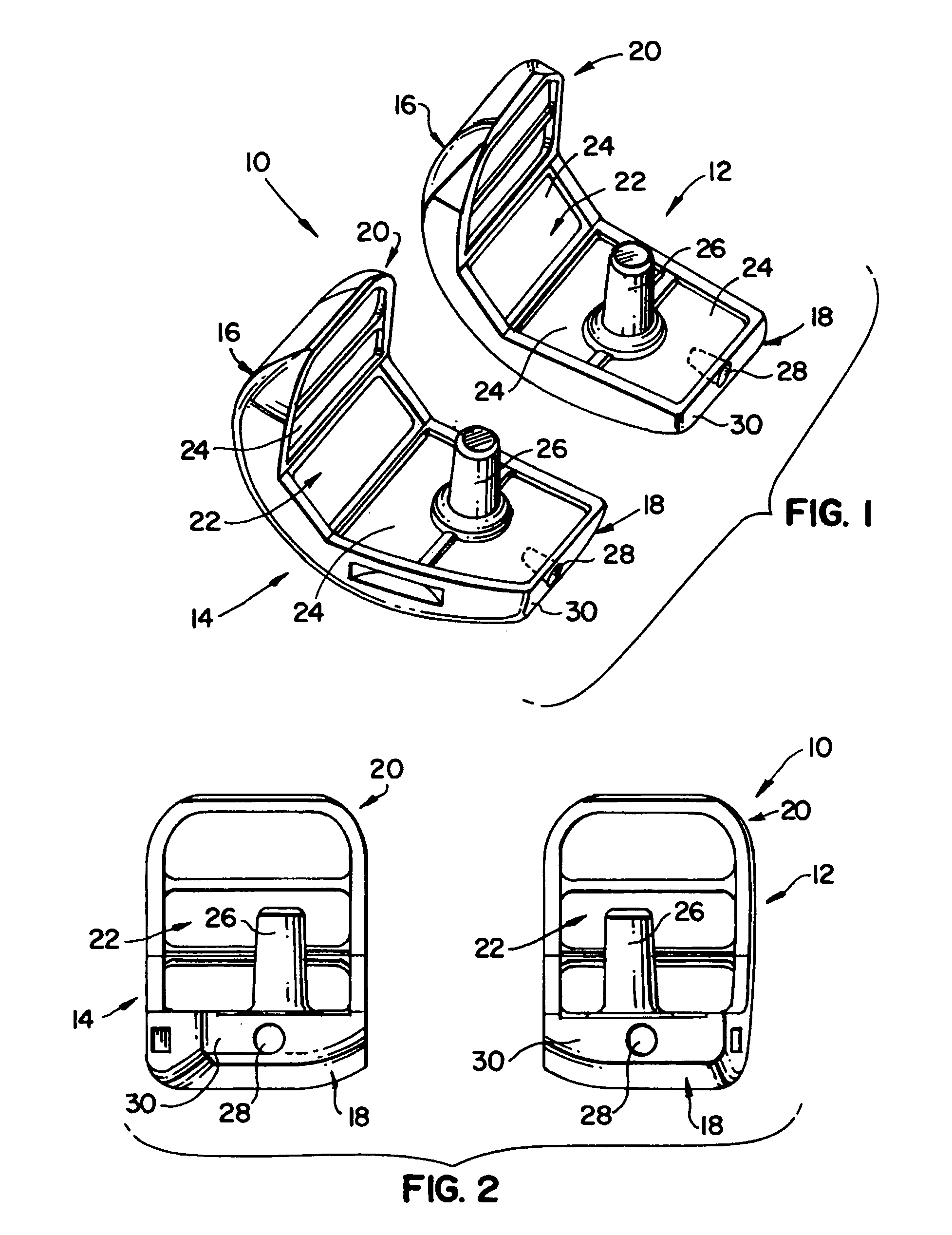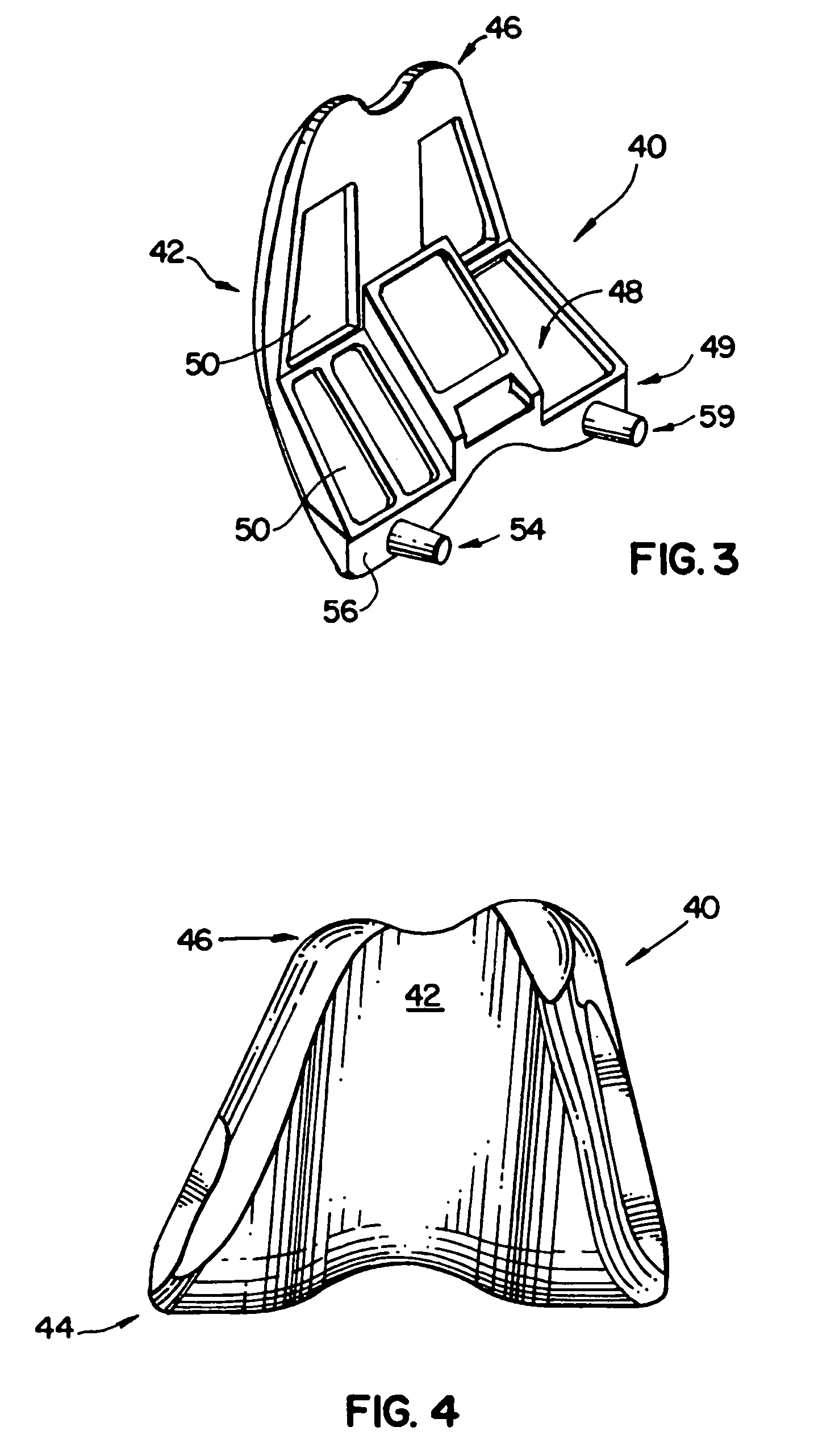Modular knee prosthesis
a knee prosthesis and module technology, applied in knee joints, medical science, surgery, etc., can solve the problems of abnormal gait, abnormal knee kinematics, pain, etc., and achieve the effect of convenient equalization, correct sized, and more diversification
- Summary
- Abstract
- Description
- Claims
- Application Information
AI Technical Summary
Benefits of technology
Problems solved by technology
Method used
Image
Examples
Embodiment Construction
[0056]FIGS. 1 and 2 illustrate two separate distal posterior femoral components generally at 10. One component is a medial distal posterior femoral component (DPFC) 12, and a second component is a lateral DPFC 14. Both femoral components 12 and 14 have a smooth outer condylar surface 16 adapted to articulate with a tibial insert. Surface 16 is shaped as a partial femoral condyle that extends from a proximal portion 18 to a distal portion 20. A bone engaging surface 22 is oppositely disposed from the condylar surface 16. This surface 22 includes several flat, planar sections 24 that extend from the proximal portion 18 to the distal portion 20. A stem 26 projects upwardly from the bone engaging surface 22. This stem 26 has a tapering cylindrical shape and is adapted to be inserted in the intramedullary canal of a femur.
[0057]The medial and lateral DPFC also includes a connector 28 located on an end surface 30 of the proximal portion 18. The connectors 28 are shaped as cylindrical, tap...
PUM
 Login to View More
Login to View More Abstract
Description
Claims
Application Information
 Login to View More
Login to View More - R&D
- Intellectual Property
- Life Sciences
- Materials
- Tech Scout
- Unparalleled Data Quality
- Higher Quality Content
- 60% Fewer Hallucinations
Browse by: Latest US Patents, China's latest patents, Technical Efficacy Thesaurus, Application Domain, Technology Topic, Popular Technical Reports.
© 2025 PatSnap. All rights reserved.Legal|Privacy policy|Modern Slavery Act Transparency Statement|Sitemap|About US| Contact US: help@patsnap.com



